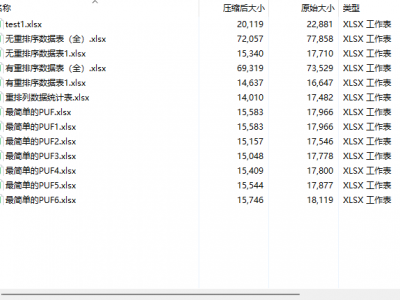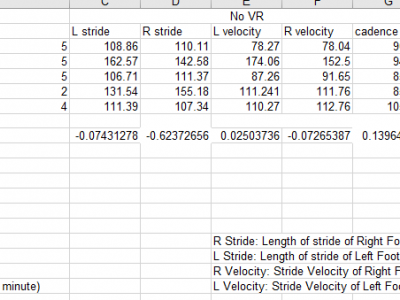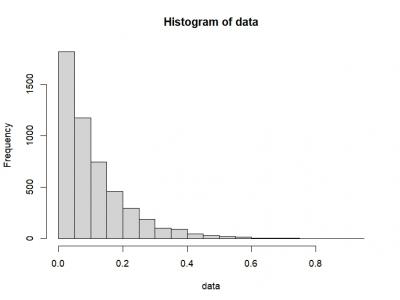Excel

CIFAR-10 and CIFAR-100 datasets comprise images of 10 and 100 categories, respectively, with a fixed size of 32x32 pixels in color.
Tiny-ImageNet dataset consists of 200 categories with approximately 120,000 samples, where each class contains 500 training images, 50 validation images, and 50 test images, with each image sized at 64 x 64.
AG News dataset consists of article titles and descriptions, comprising 4 categories with 127,600 samples.
- Categories:
 30 Views
30 Views
Security and privacy are critical challenges in the rapidly evolving metaverse, which spans a variety of immersive applications, including virtual worlds, augmented reality, and lifelogging technologies.
- Categories:
 121 Views
121 ViewsThe dataset is based on PYTHON and machine modeling of 5000 challenge response pairs for both regular CRO PUFs and HMCRO PUFs.This includes the design of reordering schemes
The dataset is based on PYTHON and machine modeling of 5000 challenge response pairs for both regular CRO PUFs and HMCRO PUFs.This includes the design of reordering schemes
The dataset is based on PYTHON and machine modeling of 5000 challenge response pairs for both regular CRO PUFs and HMCRO PUFs.This includes the design of reordering schemes
- Categories:
 149 Views
149 ViewsThe dataset gives information about the different gait metrics such as stride length for left and right foot, stride velocity for left and right foot and cadence collected from human subjects
in a controlled environment in the presence of VR(virtual reality) scenes such as positve, negative and neutral. The PHQ-9 score of the subjects is collected and correlated with
the gait score. Decriptive statitics such as median are also collected for the difference in the gait values of specific VR environments.
- Categories:
 214 Views
214 Views
This dataset comprises responses from 148 participants within the manufacturing-fabrication industry regarding their use and perceptions of dashboard monitoring systems. The data collection focused on 11 key questions, with responses recorded on a Likert scale ranging from 1 (strongly disagree) to 5 (strongly agree). The objective was to evaluate the effectiveness and impact of dashboard monitoring on various aspects of industrial operations.
- Categories:
 27 Views
27 ViewsThis dataset consists of a simulated exponential distribution data, featuring n=5000n = 5000n=5000 data points, each generated with a rate parameter of 9. The exponential distribution is commonly used to model the time between events in a Poisson process, where the rate parameter indicates the average number of events occurring in a unit of time. In this case, the relatively high rate parameter of 9 suggests that events are expected to happen frequently.
- Categories:
 664 Views
664 Views
This study proposes a stabilization approach when applying $N$th-order compensation for the average consensus of a multi-agent system affected by non-uniform, asymmetric, and time-varying delays in a communication network.
A continuous-time linear dynamical system with a local discrete-time controller modeled for each agent.
In our previous study, we proposed a packet selection algorithm that always selects the most recent packet and a synchronization algorithm that compensates for asymmetric delays to achieve an average consensus considering first-order compensation.
- Categories:
 29 Views
29 Views
This dataset contains the continuous and discrete anatomical data of Crassostrea rhizophorae and C. gasar which were measured after the specimens' identification through polymerase chain reaction-restriction fragment length polymorphism analysis and mitochondrial rDNA sequencing of the 16S rRNA.
- Categories:
 14 Views
14 Views
Interest-based e-commerce survey data. The questionnaire consists of seven sections: The first part includes seven questions about respondents' basic information and platform usage behavior, aimed at determining if the respondents are suitable for this study. The second to seventh parts pertain to the measurement of research variables, covering user interactions, interactions with celebrities, visual appeal, perceived enjoyment, purchase intention, and self-indulgence, totaling 24 questions.
- Categories:
 115 Views
115 ViewsThe Big Five Inventory-2 (BFI-2) is one of the most used questionnaires to assess personality traits, distinguishing 15 facets. Despite its usage, there is still room for research to improve its psychometric properties. We applied the Rasch analysis (RA) to transform the BFI-2 into an instrument consisting of actual interval scales (obtaining the BFI-2-R), involving 5362 Italian adults. Five confirmatory factor analyses supported the three-facet structure of each trait. This structure resulted invariant at the scalar level across sex.
- Categories:
 226 Views
226 Views


